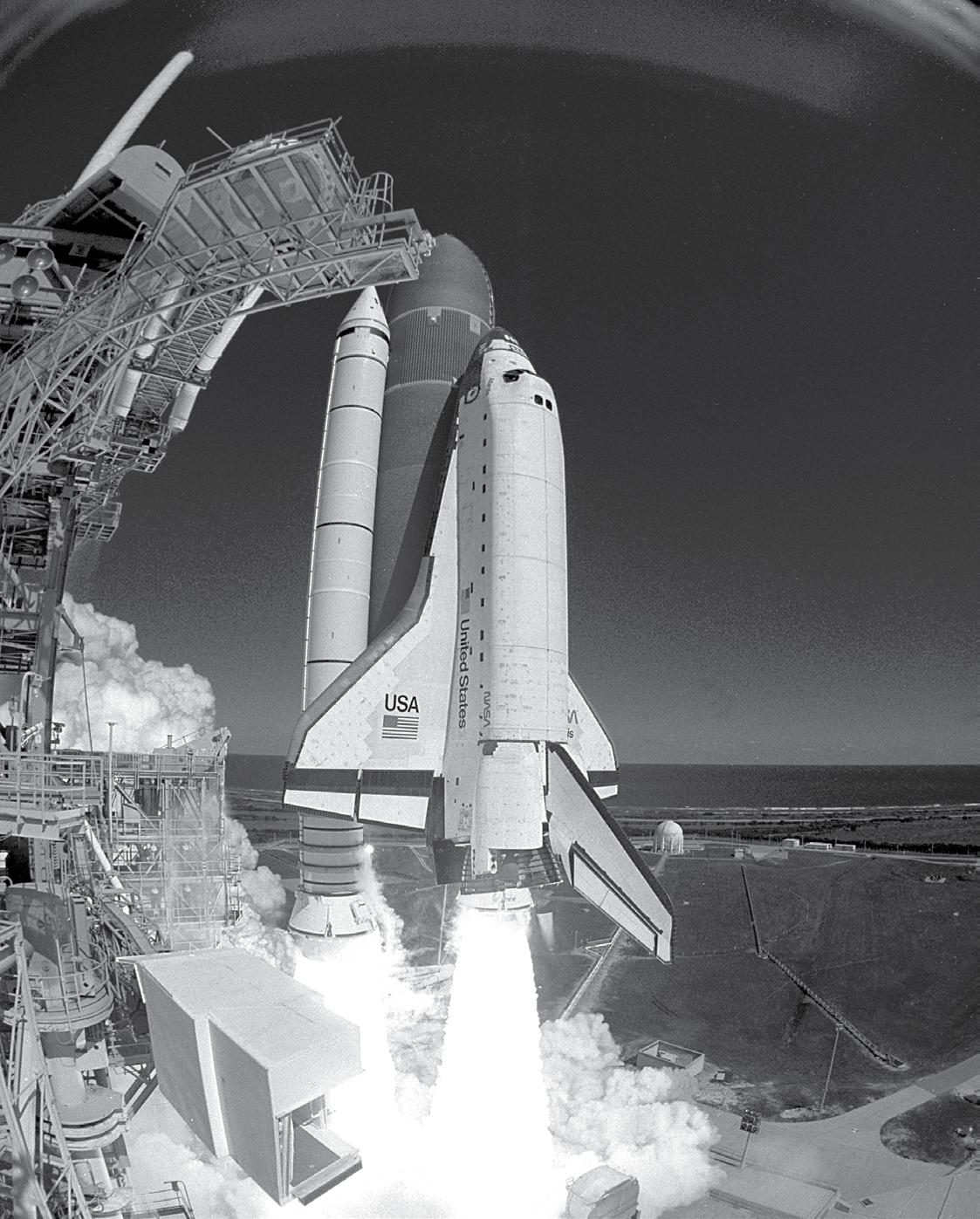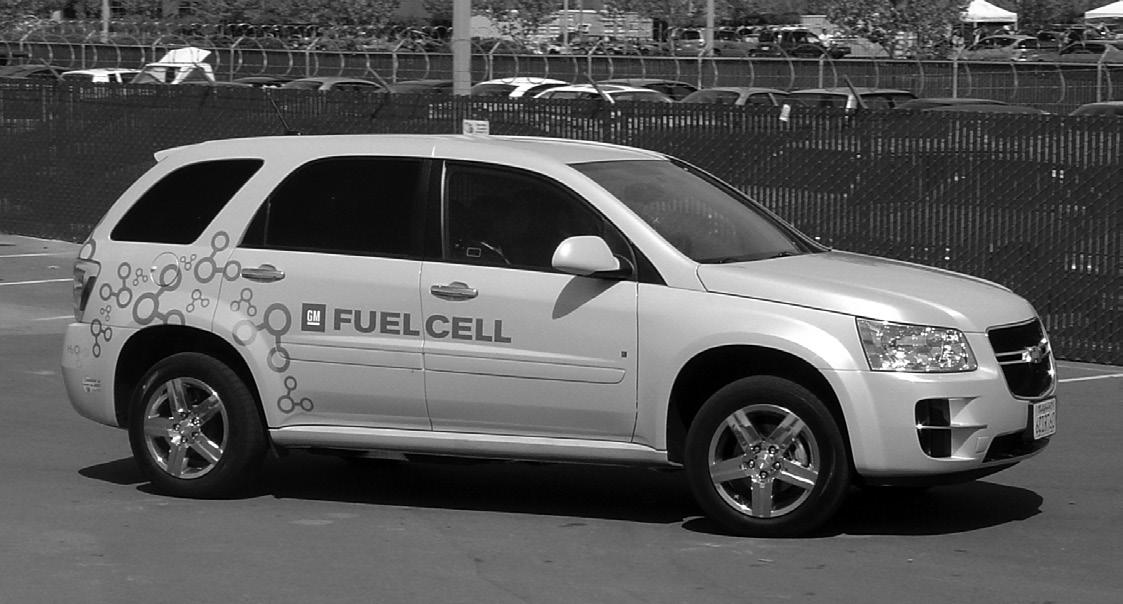
4 minute read
Hydrogen
What Is Hydrogen?
Hydrogen is the simplest element known to man. Each atom of hydrogen has only one proton and one electron. It is also the most plentiful gas in the universe. Stars are made primarily of hydrogen. Like all stars, our sun’s energy comes from hydrogen. The sun is a giant ball of hydrogen and helium gases. Inside the sun, hydrogen atoms combine to form helium atoms. This process, called fusion, gives off radiant energy. This radiant energy sustains life on Earth. It gives us light and makes plants grow. It makes the wind blow and rain fall. It is stored in fossil fuels. Most of the energy we use today came from the sun. Hydrogen as a gas (H2) doesn’t exist on Earth. It is always mixed with other elements. Combined with oxygen, it is water (H2O). Combined with carbon, it makes different compounds such as methane (CH4), coal, and petroleum. Hydrogen is also found in all growing things— biomass.
Hydrogen has the highest energy content of any common fuel by weight, but the lowest energy content by volume. It is the lightest element and is a gas at normal temperature and pressure.
Hydrogen Can Store Energy
Most of the energy we use comes from fossil fuels. Only about nine percent comes from renewable energy sources. They are usually cleaner and can be replenished in a short period of time. Renewable energy sources—like solar and wind—can’t produce energy all the time. The sun doesn’t always shine. The wind doesn’t always blow. Renewables don’t always make energy when or where we need it. We can use many energy sources to produce hydrogen. Hydrogen can store the energy until it’s needed and move it to where it’s needed.
Energy Carrier
Every day, we use more energy, mostly coal, to make electricity. Electricity is a secondary source of energy. Secondary sources of energy—sometimes called energy carriers—store, move, and deliver energy to consumers. We convert energy to electricity because it is easier for us to move and use.
Electricity gives us light, heat, hot water, cold food, TVs, and computers. Life would be really hard if we had to burn the coal, split the atoms, or build our own dams. Energy carriers make life easier. Hydrogen is an energy carrier. It is a clean fuel that can be used for transportation, heating, and generating. However, since hydrogen doesn’t exist on Earth as a gas, we must make it.
THE SPACE SHUTTLE
Image courtesy NASA
NASA once used hydrogen to fuel the space shuttle. Hydrogen batteries— called fuel cells—powered the shuttle’s electrical systems.
Fusion
The process of fusion most commonly involves hydrogen isotopes combining to form a helium atom with a transformation of matter. This matter is emitted as radiant energy.
Hydrogen Isotope
Neutron Hydrogen Isotope
Helium Energy
Hydrogen Fuel Cell
A fuel cell consists of an electrolyte membrane sandwiched between two catalyst-coated electrodes (anode and cathode). Oxygen (air) passes through one electrode and hydrogen through the other, generating electricity, water, and heat.
HYDROGEN IN ELECTRICITY OUT
ANODE MEMBRANE CATHODE AIR IN
WATER AND HEAT OUT
How Is Hydrogen Made?
Hydrogen is made by separating it from water, biomass, or natural gas—from domestic resources. Scientists have even discovered that some algae and bacteria give off hydrogen. It is expensive to make hydrogen right now, but new technologies are being developed. Hydrogen can be produced at large central facilities or at small plants for local use. Every region of the country (and the world) has some resource that can be used to make hydrogen. Its flexibility is one of its main advantages.
Uses of Hydrogen
Several million cubic feet of hydrogen are produced in the U.S. each day. Most of this hydrogen is used by industry in refining, treating metals, and processing foods. NASA was once the primary user of hydrogen as an energy fuel; it used hydrogen for years in the space program. Hydrogen fuel was used to lift the space shuttle into orbit. Hydrogen batteries—called fuel cells—powered the shuttle’s electrical systems. The only byproduct was pure water, which the crew used as drinking water. Hydrogen fuel cells make electricity. They are very efficient, but expensive to build. Small fuel cells can power electric cars. Large fuel cells can provide electricity in remote areas.
Hydrogen as a Fuel
Because of cost, storage, and distribution concerns, hydrogen power plants may not be built for a while. Hydrogen may soon be added to natural gas though, to reduce pollution from existing plants. Soon hydrogen may be added to gasoline to boost performance and reduce pollution. Adding just five percent hydrogen to gasoline can significantly lower emissions of nitrogen oxides (NOx), which contribute to ground-level ozone pollution.
Hydrogen Life Cycle
Primary Renewable Energy Source
Hydrogen Production
Hydrogen Water
Storage and Transport
Oxygen Oxygen
Environment
Water Hydrogen
Hydrogen Utilization
Useful Energy
HYDROGEN-FUELED VEHICLE
Image courtesy U.S. Department of Energy

An engine that burns pure hydrogen produces almost no pollution. It will be a while though before you can walk into your local car dealer and drive away in a hydrogen-powered car.
The Future of Hydrogen
Before hydrogen becomes a significant fuel in the U.S. energy picture, many new systems must be built. We will need systems to produce hydrogen efficiently and to store and move it safely. We will need many miles of new pipelines and economical fuel cells. Consumers will need the technology and the education to use it. More infrastructure and fueling stations will need to be added. With advancements in hydrogen and fuel cell technologies, hydrogen has the potential to provide a large amount of clean, renewable energy in the future.









